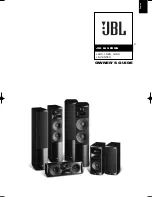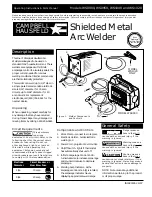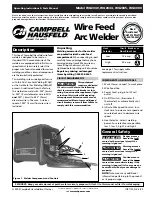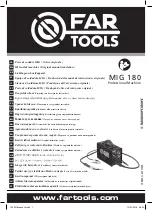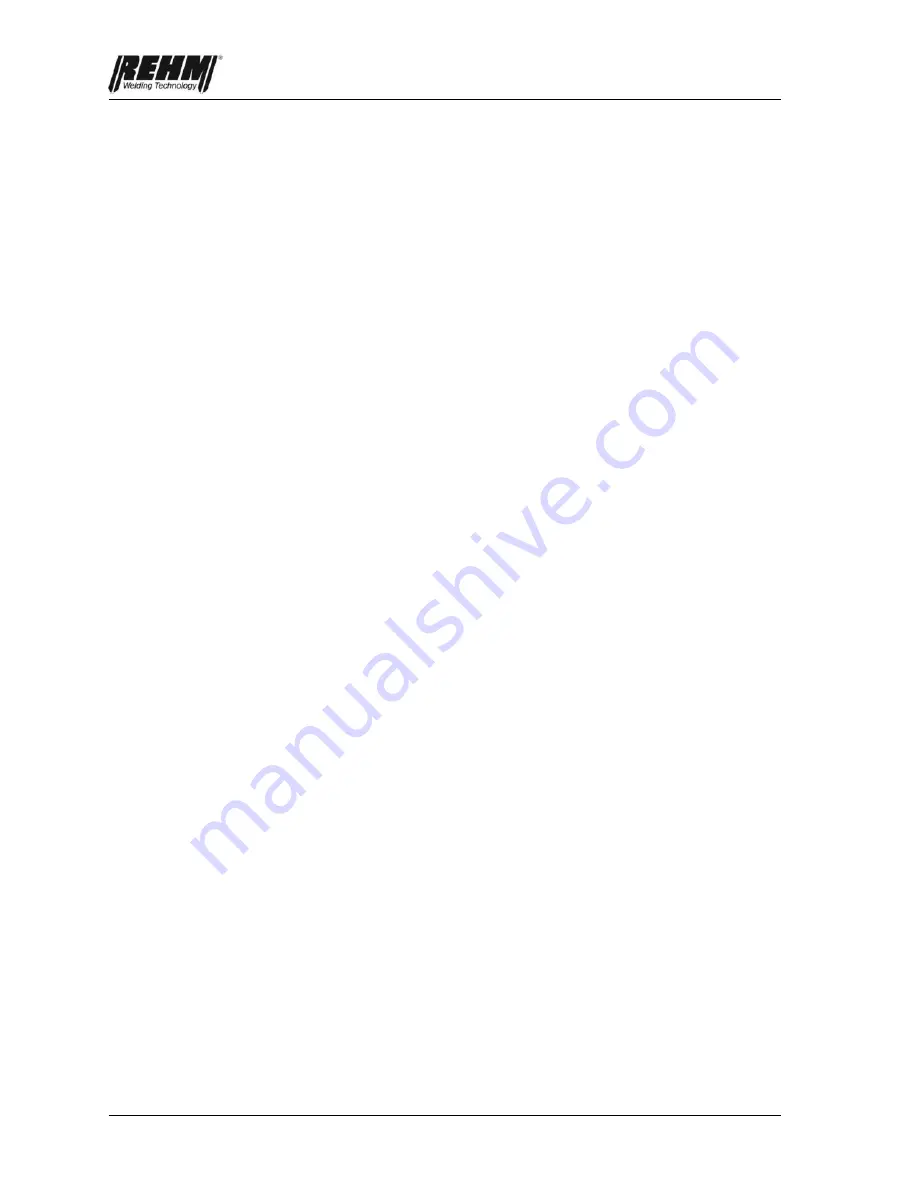
Operation
44
Argon is the main shielding gas used for TIG welding. For particular applications,
Helium, Argon-Helium mixtures or Argon-Hydrogen mixtures may be used.
Increasing the Helium content makes the arc more difficult to ignite and
increases the introduction of heat. The volume of shielding gas required is
dependent on the electrode diameter, the size of the gas nozzle, the welding
current level and the movement of air caused by workplace conditions. For a
workpiece thickness of 4 mm, when Argon is the shielding gas used, an initial
guideline for Aluminium, for example, is approx. 8 litres/minute, and for steel and
chrome/nickel steel is approx. 6 litres/minute. If Helium is used, the volume
required is significantly higher.
The standard length of the TIG welding torch is 4 metres. However, longer
torches may also be connected to these machines. The appropriate tungsten
electrode, clamping collet, and gas nozzle have to be selected depending on the
welding job and current intensity. In torches with two buttons, the two-current
controller can be used to switch the current between two differing values during
welding.
During manual welding, welding filler material is usually provided in rod form. The
correct material is to be selected depending on the base metal. However,
excellent results can also be achieved if the weld pool from two parts is simply
allowed to run together, for example at corner seams.
In DC welding, the negative pole is usually to the electrode. The negative pole is
the cooler, with the result that the current carrying capacity, and the service life of
the tungsten electrodes are significantly higher than with positive pole welding.
In AC welding, the current-carrying capacity of the electrode is affected to a
considerable extent by the wave balance setting. The wave balance setting
distributes the positive and negative components of the welding current between
the electrode and the workpiece. During the positive half wave, the Aluminium
oxide skin is destroyed and a higher temperature is generated at the electrode.
During the negative half wave, the electrode cools down again and the
Aluminium is heated. Since usually only a short positive pulse is needed in order
remove the Aluminium oxide skin, a greater negative proportion can be used with
REHM TIG units.
This has a number of advantages:
1.
The temperature load on the electrode is reduced.
2.
A higher current can be applied to the electrode.
3.
The current range of the electrode is increased.
4.
A pointed electrode can be used for welding.
5.
The arc becomes more slender.
6.
The penetration becomes deeper.
7.
The heat-affected zone of the electrode becomes smaller.
8.
The welding speed becomes higher.
9.
Less heat is introduced into the workpiece.
Practical values for setting the wave balance for AC welding are:
for butt-welds negative proportion 60% to 70%.
for fillet welds negative proportion 70% to 80%.
see also "Tungsten Electrodes"
Shielding gases
TIG -
Welding torch
Welding with and
without filler
material
Direct current
welding
Alternating current
welding
Содержание 150 3310
Страница 1: ...GB OPERATING INSTRUCTIONS TIG welding units TIGER 170 210 DC AC DC SET...
Страница 7: ...Introduction 7 1 2 General description Fig 1 1 TIGER 170 DC and Tiger 210 AC DC...
Страница 57: ...Spare parts 57 10 2 Machine components photographs 2...
Страница 58: ...Spare parts 58...
Страница 63: ......


































